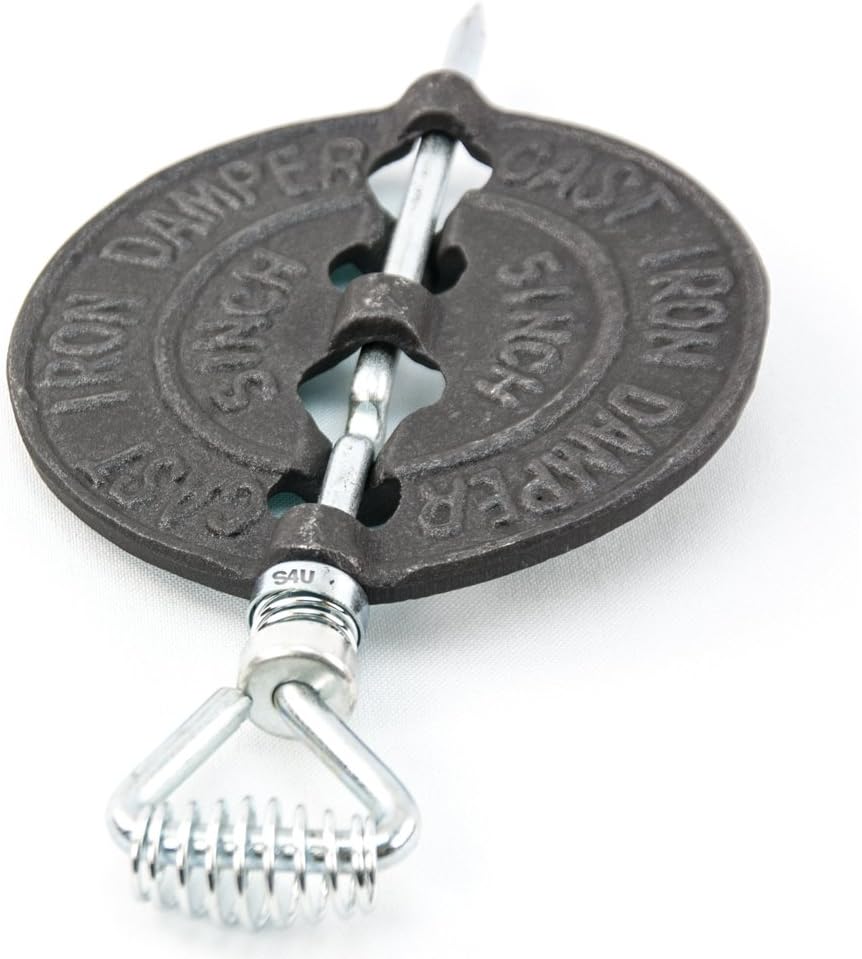About this deal
A damaged fireplace damper may not fully open or close. Rust can cause this. So can warping and general old age. After an inspection, your chimney technician will tell you the extent of any damage present and will advise either repair or replacement of the damper. As noted, chimney liner inspections are important as are inspections of your masonry structure and components such as the chimney crown, chimney cap and chimney flashing. The fireplace damper Closing the damper when a fire is not burning seals off the fireplace from the outside. This keeps the conditioned (heated or cooled) air inside your home from escaping and also prevents precipitation, wind gusts, and intrepid animals from making their way down the flue tube into your home. Looking to become more self-sufficient? Join me and 14,000 others on Abundance Plusand get discounts, masterclasses, community, and more. What’s the Difference Between a Flue and a Damper?
Wood burning stoves already have a door on the front that can act as a seal against air movement, and their smaller flues are usually better and more easily defended from outside incursions but outside screens or caps. How to Tell if Your Damper Is Open or Closed Some older open fireplaces don’t have a damper, and they can function perfectly fine as fireplaces without one. You’ll be able to use your damper to keep the heated or cooled air of your home inside the walls of your house and keep the aforementioned critters, weather events, and debris (and sometimes very short-sighted children) outside of them. You do! If you have any kind of combustion situation happening indoors—a fireplace, furnace, or wood stove—your damper becomes an important tool in containing and controlling that fire. It also seals the flue opening off from the outside when no fire is burning. The flue is also sometimes called the chimney lining when used with an open fireplace. You may think that it is your chimney that pulls the smoke up and out of your house when you’re burning fire, but this is incorrect.This is especially important if you have a throat damper instead of a top-mount damper. All kinds of flammable buildup or debris can make their way down a flue over time, even if you have a chimney cap, and this is the leading cause of chimney fires. Do All Fireplaces Have a Damper? When installed by a Worcester Bosch Accredited Installer with a Greenstar System Filter. The Greenstar 1000 and Greenstar 2000 guarantee is available as standard to both Excelerate members and non-WAI's, when fitted with any brand of system filter. Terms and conditions apply. The flue itself is any metal tube through which ash, sparks, smoke, and gases are drawn up and away from the interior of your house. The fact is, these two parts of your system are quite different in terms of function and necessary maintenance and upkeep. Let’s look at the specs of flues and dampers. The chimney flue
When you aren’t using your fireplace, the damper should be tightly closed to prevent an unwanted exchange of air between your home and the outside world. A closed damper also keeps bugs, squirrels, birds and other critters out of your house. Damper issues Do you have a problem with your damper or flue? A-1 Chimney Specialist of Winchester, TN, and Huntsville, AL, is ready to help. We provide licensed fireplace and chimney inspections, chimney sweeping and all types of chimney repairs to keep your home and family safe.The flue is the inside passageway of your chimney through which smoke and combustion gases are carried up and away from your home out the top of your chimney. Most flues in homes today include a flue liner (or chimney liner), which is designed to provide smooth drafting and protect the chimney’s interior masonry from heat, fire and damage from acidic compounds. If a flue is used with a fireplace, it releases these through a chimney opening. If used with a furnace or wood stove, it releases them through a vent on the roof or side of the building. Image source: Camosse Masonry Supply A throat damper is positioned at the bottom of the flue and about a foot above the firebox in an open fireplace, just out of sight from the outside of the fireplace. A top-mount damper will be at the top of the flue underneath the chimney cap. Do You Need a Fireplace Damper? Your damper is a plated device that sits above the firebox. Its function is to regulate the volume of air that travels through the fireplace/chimney system. When fully open, the damper allows for sufficient air to start fires easily and keep them burning aggressively. It also gives smoke and toxins such as dangerous carbon monoxide a pathway to exit the fireplace. These stoves are fully manual so setting the temperature of the flames is more hands-on than adjusting a dial. By opening the damper wider, you can make the fire in wood stoves burn faster. By keeping closing the damper partway to make the opening smaller, you’ll make it burn hotter and slower.
 Great Deal
Great Deal 